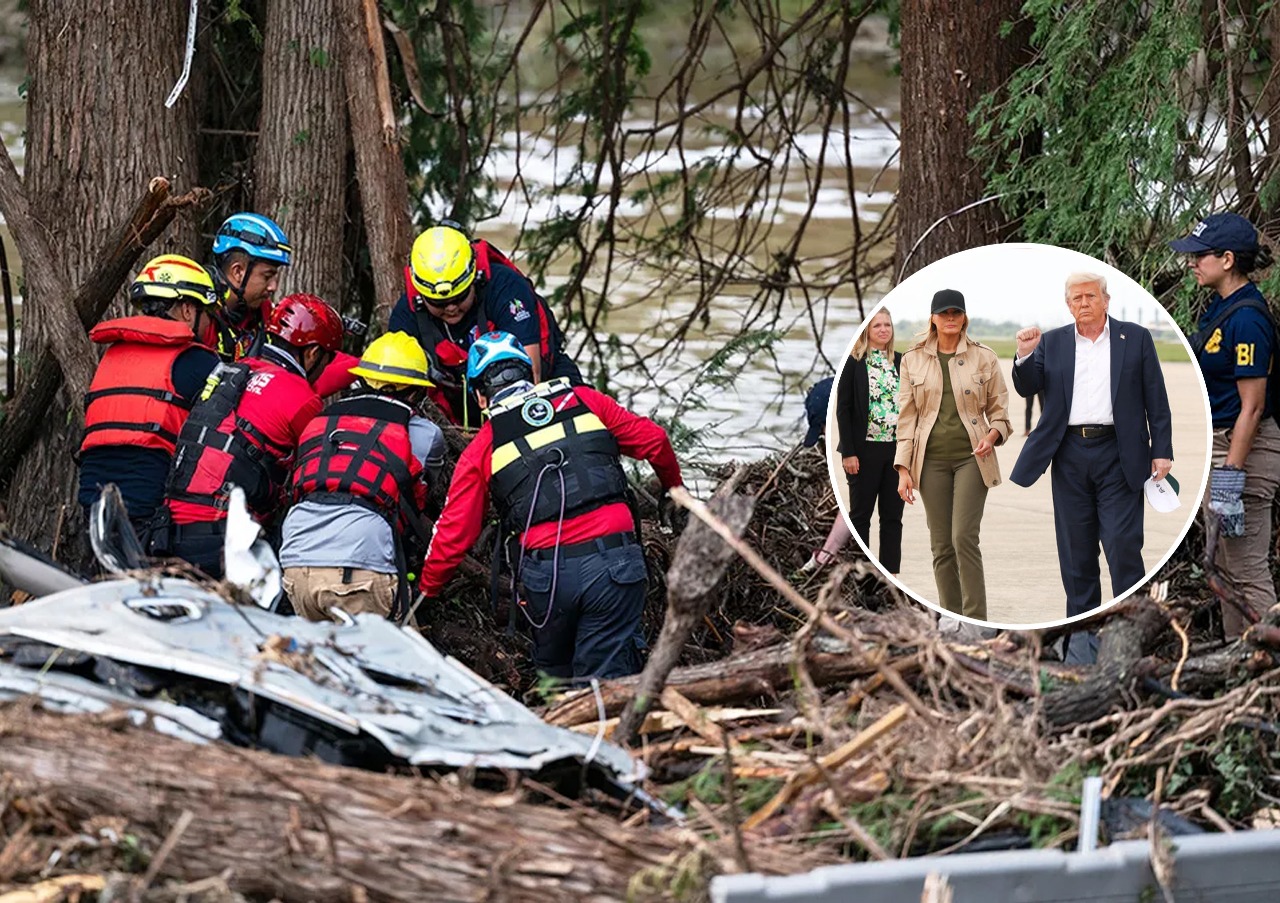
By Sulagna Halder
KERR COUNTY, TEXAS:
President Donald Trump visited the hard hit Hill Country region of Central Texas on 11 July, surveying the aftermath of flash floods that claimed at least 120 lives and left around 160 people missing. The disaster was triggered by more than a foot of rain in under an hour on 4 July, causing the Guadalupe River to surge from a foot to 34 feet, devastating communities along its banks.
Trump toured damage in Kerr County, widely regarded as the epicentre, alongside Governor Greg Abbott and Homeland Security Secretary Kristi Noem. He praised their relief efforts, stating that they had mounted an “incredible” government response amid coy criticism from observers about the lack of early warning systems.
During a press briefing, Governor Abbott announced that the Texas Legislature will convene a special session later this month to review preparedness and allocate disaster relief funding.Senate Democratic leader Chuck Schumer criticised recent staffing cuts at the National Weather Service, questioning whether those losses delayed or weakened warning capabilities ahead of the crisis.
Search and rescue operations have continued amid challenging terrain and sweltering heat. Over 2,100 first responders, including firefighters, National Guard troops and volunteers are combing the debris filled riverbanks in hopes of finding survivors among those still unaccounted for. While hundreds were rescued, doubts persist: authorities caution that the list of missing may include people displaced and already safe.
Among the dead, 36 children were confirmed killed, many from Camp Mystic, a girls’ summer camp situated on the Guadalupe River shoreline. In Travis County, eight fatalities have been identified; four people remain missing.
The floods have also caused significant agricultural losses. Heavy rainfall destroyed crops, damaged farm machinery, and killed livestock in rural areas of Kerr, Burnet, Travis, Kendall and Tom Green Counties. State Agriculture Commissioner Sid Miller confirmed that affected farmers will receive disaster‑relief and mental health support.
Local communities have begun grieving, with memorial services already underway in towns such as Kerrville. A disaster recovery centre has opened to provide shelter and assistance to those displaced.
While Trump promised continued federal aid, critics maintain the tragedy exposed lapses in preparedness. Dallas‑area residents voiced concern over NOAA staffing cuts that may have hampered timely alerts. White House Press Secretary Karoline Leavitt rejected the critique as a “depraved lie,” insisting the federal response has been consistent.
Emergency alerts were reportedly not fully received by some residents, particularly campers at Camp Mystic, raising concerns about outdated systems in flash flood prone regions often referred to as “flash flood alley.” Governor Abbott has urged lawmakers to include funding for upgraded alert systems, including sirens and satellite‑linked notifications.
As Texas braces for further climate‑induced weather extremes, state officials have emphasised that this disaster must serve as a wake up call: stronger infrastructure, robust forecasting, upgraded emergency planning, and community readiness are essential for resilience in perilous terrain.